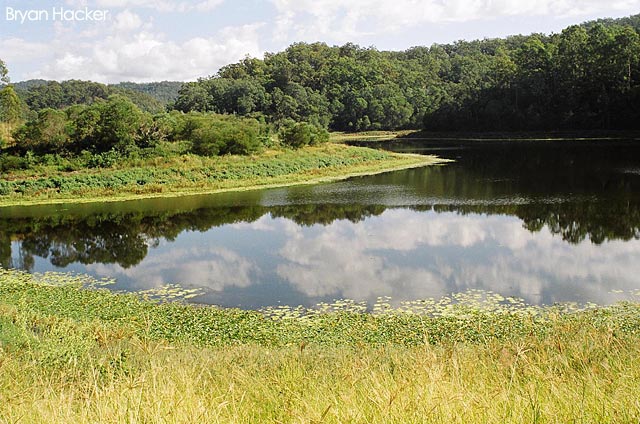Landscape

What are Landscape Characteristics?
A Landscape comprises the visible features of an area of land, including the physical elements of landforms such as hills, mountains, and streams, soils, land cover including vegetation, and different forms of land use, buildings and structures.
Geology, geomorphology and climate determine over very long time frames, the topography, drainage patterns and soils in a landscape. All of these factors plus fire and neighbouring land uses determine biodiversity in remnant ecosystems including aquatic systems.
Landscapes within Moggill Creek Catchment and neighbouring catchments have very high biodiversity and form part of, or are connected to important conservation reserves in S. E. Queensland. These natural assets so close to a major city are the result of great vision by the early Government in Queensland.
As with many parts of Australia, the landscapes have been degraded through early logging, and development for farming, mining, rural lifestyle and more recently urban development; natural disaster events also have caused severe degradation through storms, droughts, floods and fire.
Loss of biodiversity is one of the most serious results of degradation. Restoring the effects of degradation usually takes a long time, is nearly always difficult (often impossible) to achieve and will generally occur through incremental changes.
The Creeks
Moggill Creek rises in Brisbane Forest Park North West of Upper Brookfield and runs roughly southeast for 15kms to meet the Brisbane River, where .. Read more about The Creeks
Soils
Seven soil landscapes have been recognised in the Moggill Creek Catchment The following map shows their distribution:
 Soils in the MCCG Catchment (1517 KB)
Soils in the MCCG Catchment (1517 KB)
Vegetation
Remnant vegetation covers an estimated 40% of the catchment mainly in the north and west on the hills and low hills of the metamorphic sediments o.. Read more about Vegetation
Land Use
The higher parts of the catchment are still for the most part heavily timbered mainly with Eucalypt forest communities, but with some patches of r.. Read more about Land Use
Geology
The landscapes of the Moggill Creek Catchment have been developed from: The metamorphosed greywacke, shales, siltstones and phyllites and inter.. Read more about Geology
Restoring the effects of degradation
Biodiversity in Australian landscapes has been very severely degraded through a multitude of activities over the last 200 plus years since Europea.. Read more about Restoring the effects of degradation

